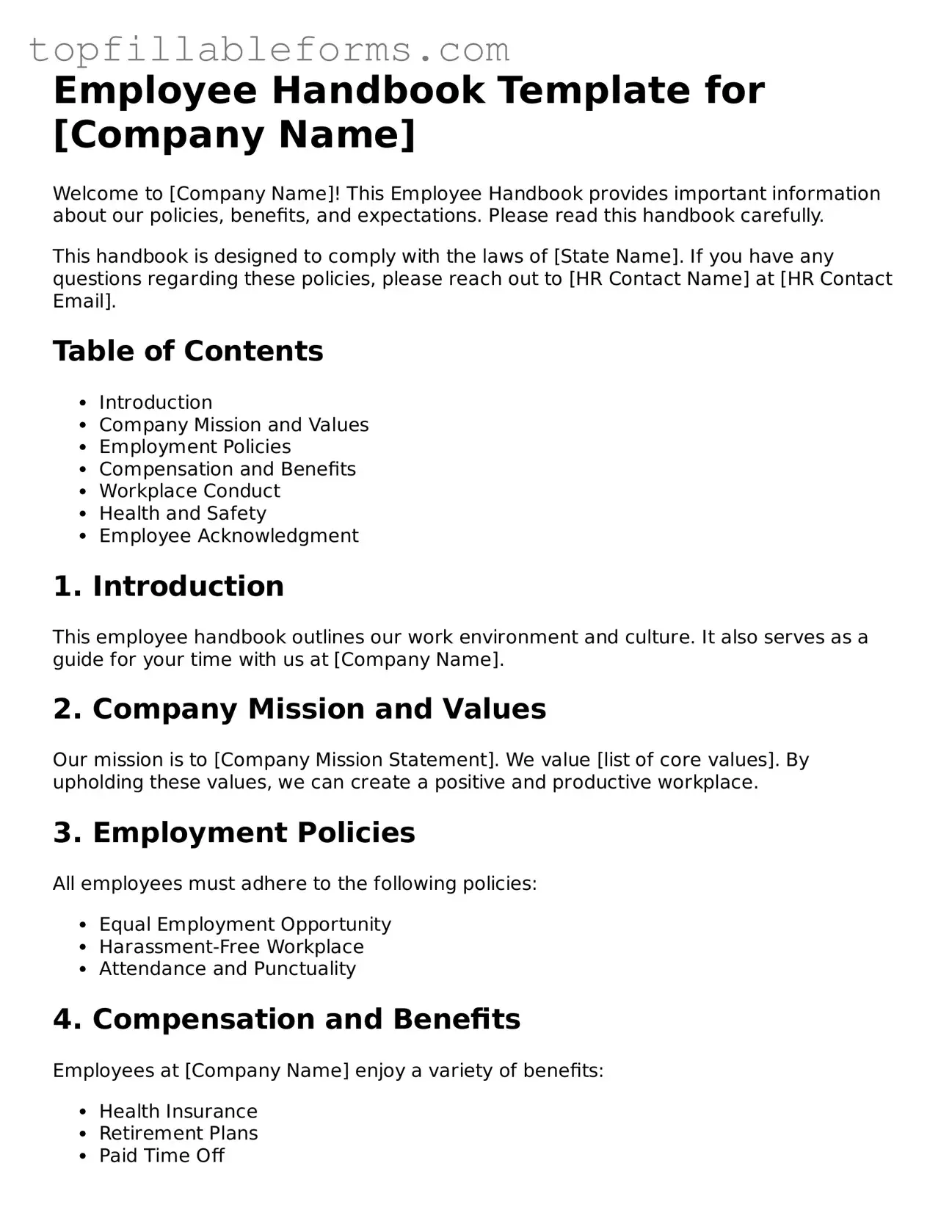Employee Handbook Template for [Company Name]
Welcome to [Company Name]! This Employee Handbook provides important information about our policies, benefits, and expectations. Please read this handbook carefully.
This handbook is designed to comply with the laws of [State Name]. If you have any questions regarding these policies, please reach out to [HR Contact Name] at [HR Contact Email].
Table of Contents
- Introduction
- Company Mission and Values
- Employment Policies
- Compensation and Benefits
- Workplace Conduct
- Health and Safety
- Employee Acknowledgment
1. Introduction
This employee handbook outlines our work environment and culture. It also serves as a guide for your time with us at [Company Name].
2. Company Mission and Values
Our mission is to [Company Mission Statement]. We value [list of core values]. By upholding these values, we can create a positive and productive workplace.
3. Employment Policies
All employees must adhere to the following policies:
- Equal Employment Opportunity
- Harassment-Free Workplace
- Attendance and Punctuality
4. Compensation and Benefits
Employees at [Company Name] enjoy a variety of benefits:
- Health Insurance
- Retirement Plans
- Paid Time Off
5. Workplace Conduct
We expect all employees to maintain a professional demeanor. This includes:
- Respecting Colleagues
- Coming to Work Prepared
- Communicating Effectively
6. Health and Safety
Your health and safety are a priority. Please be aware of the following policies:
- Reporting Unsafe Conditions
- Emergency Procedures
- Workplace Safety Training
7. Employee Acknowledgment
Employees must sign and acknowledge they have read and understood this handbook. Please provide your signature below:
Employee Name: _______________________
Signature: ____________________________
Date: _________________________________
Thank you for being a part of [Company Name]. Together, we can achieve great things!
